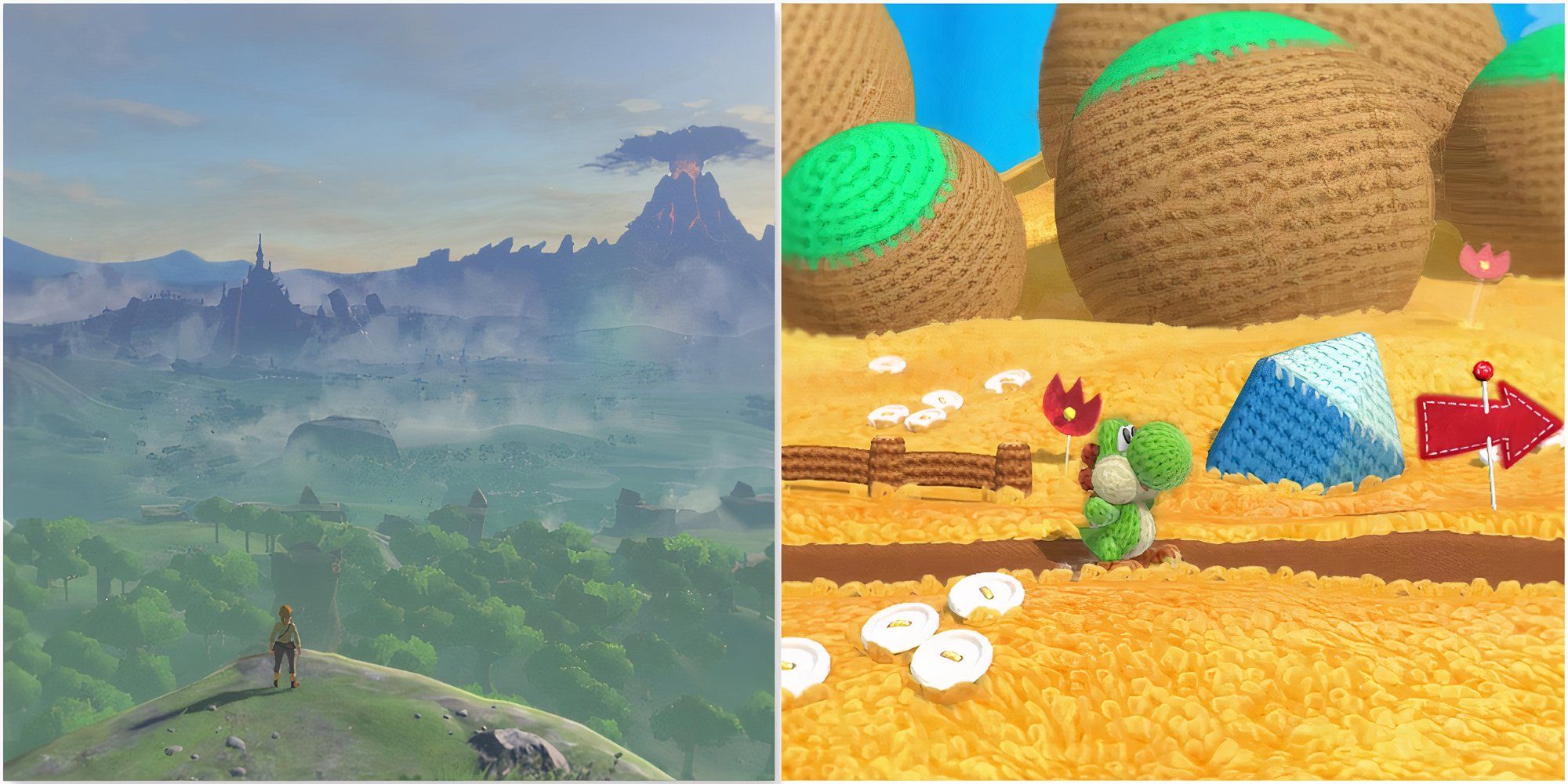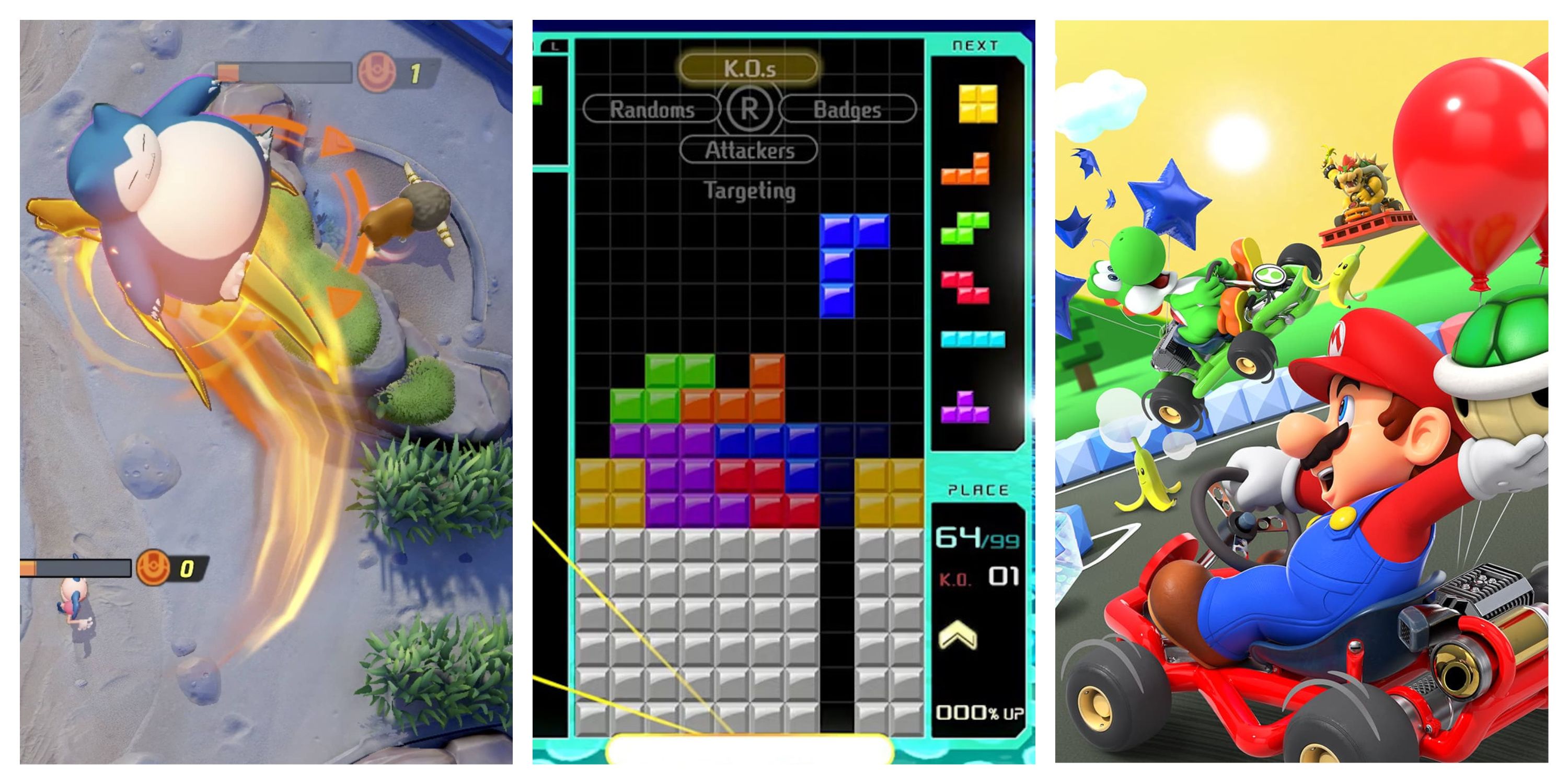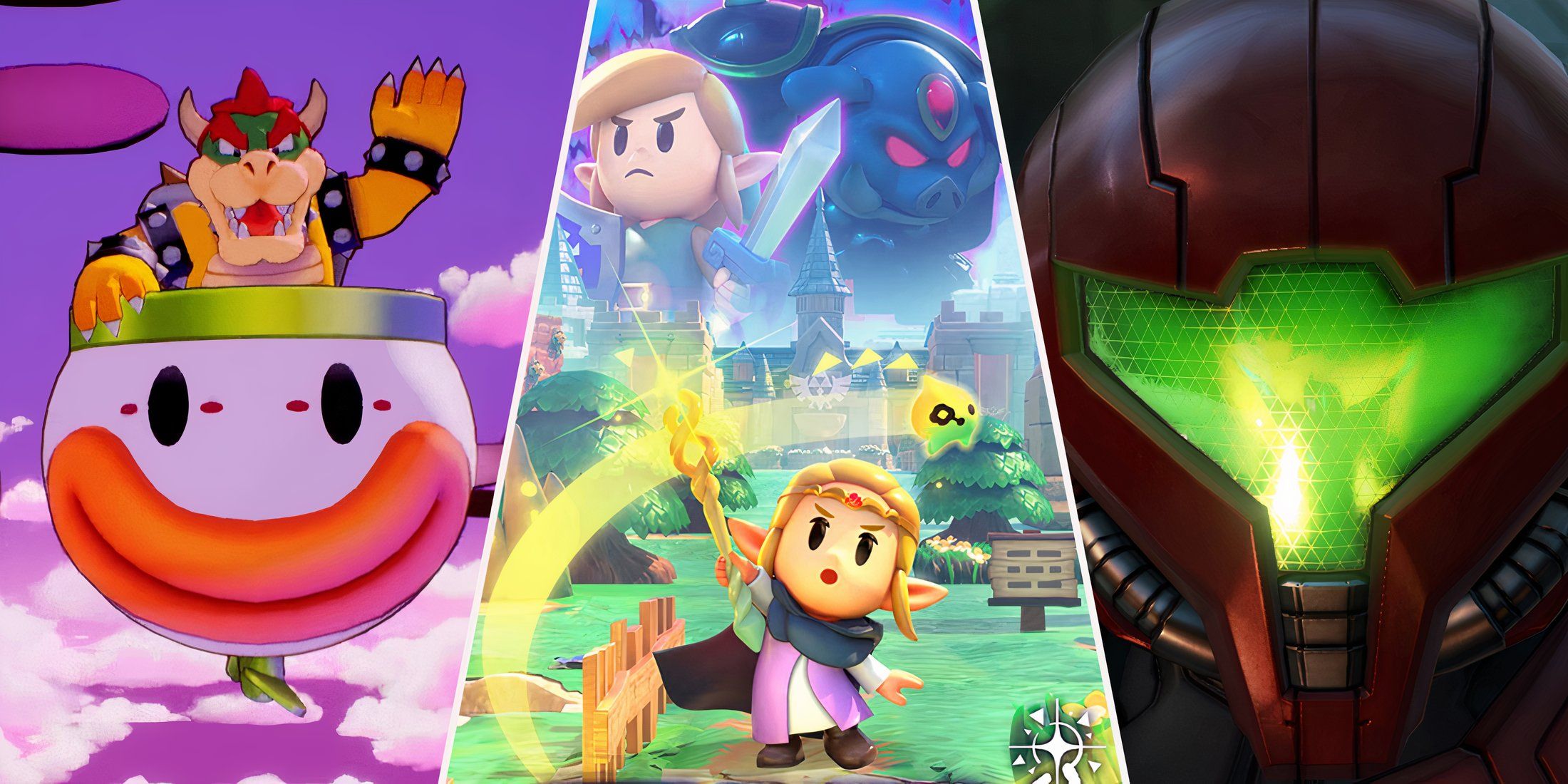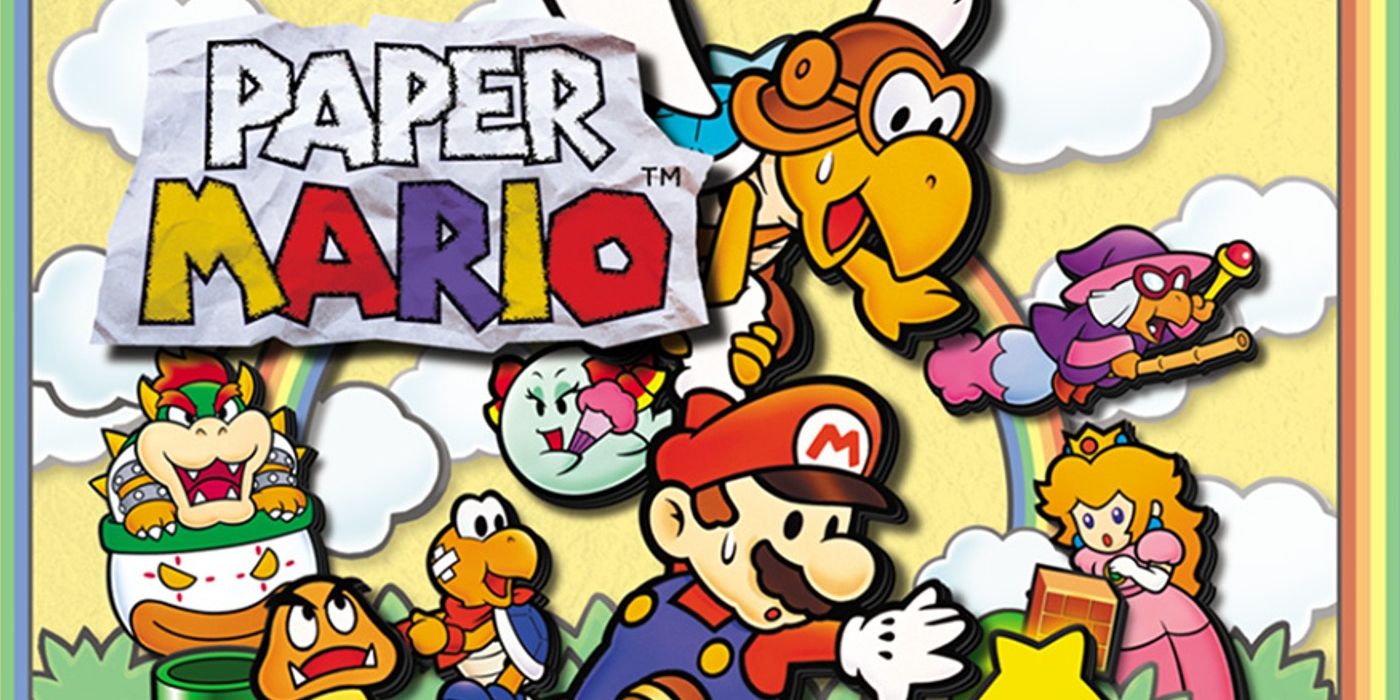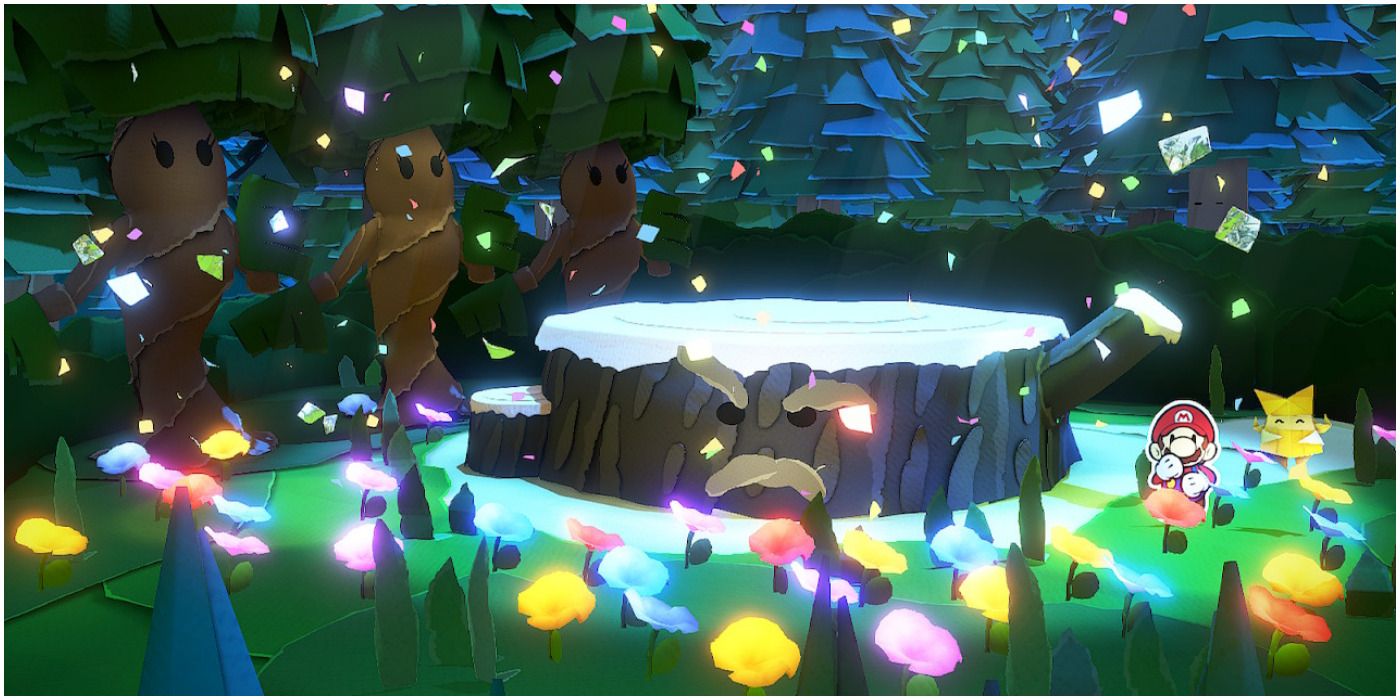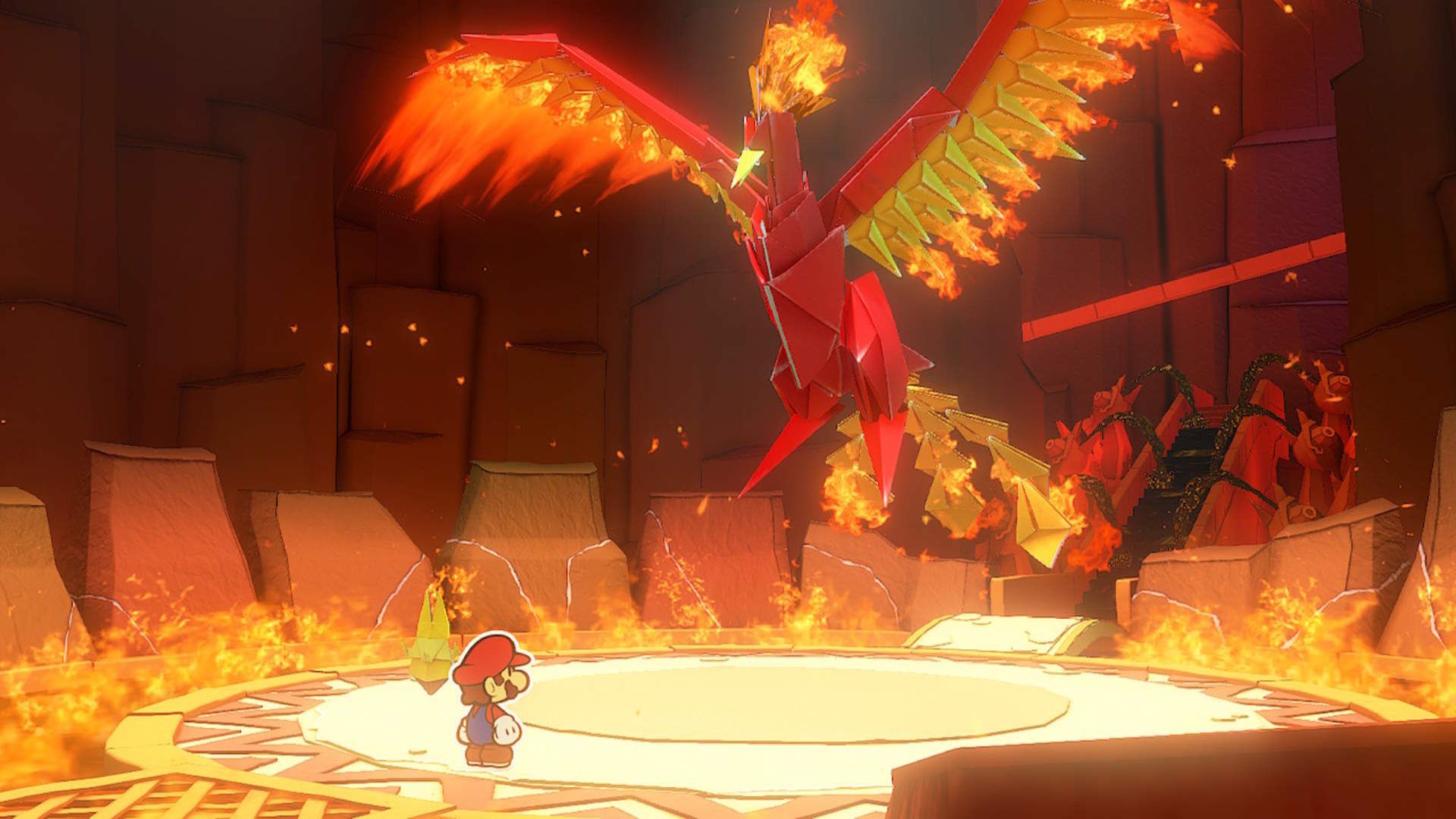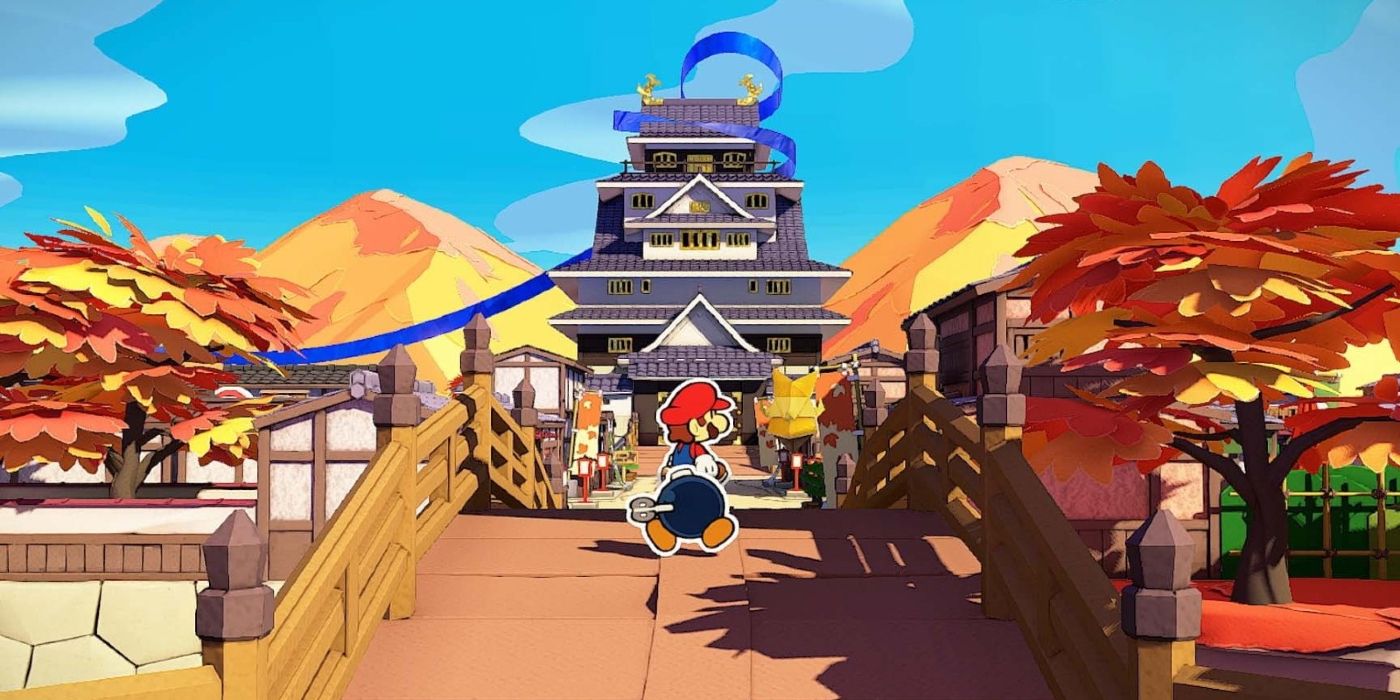The Nintendo 64 is arguably one of the most nostalgic icons of the 90s, especially for gamers. Millennials and even some gen-Zers likely remember blowing into the bulky cartridges, desperately trying to get them to load once again, or the strange three-legged controllers that were just too big for the hands of tiny 90s babies. And perhaps one of the most symbolic games of the fifth generation of consoles is the original Paper Mario. Note: There are MAJOR SPOILERS for The Origami King ahead.
While many folks who were lucky enough to play the original Paper Mario agree that it was something to be adored and not forgotten, it's pretty universally agreed upon that the first installment in the series would leave much to be desired, but would lay down the groundwork for a highly-improved upon series to follow in its footsteps while keeping with the vibe of papery humor.
And just shy of Paper Mario's 20 year anniversary is the gaming community graced with The Origami King's presence. Side by side, it's amazing to see how the series has evolved so much throughout the decades while still withholding the most charming elements seen in the original installment, whether it be the turn-by-turn combat or the artistic style of the characters.
Paper Mario vs. The Oragami King: Graphics and Combat
While keeping true to the original aesthetic gamers came to love in 2000, the graphics have developed to the remarkable level seen in The Origami King. Obviously, after a 20-year difference between the first and most recent game, there's going to be an improvement. But the graphics aren't just better; the art style has evolved. Every angle of the game is pleasing to look at thanks to the creative design and usage of paper throughout, whether it be the magical confetti, folded origami enemies, cardboard surface textures, or even pull-tabs to reveal hidden items.
The major change to note between Paper Mario and The Origami King is, of course, the evolution of combat. Paper Mario originally implemented its own version of turn-by-turn combat that many players at the time loved, though it was imperfect. It introduced to the Mario franchise a classic style of combat often seen in JRPGs that was supported by Mario's many companions that would accompany him. The Thousand-Year Door, the direct sequel to the first Paper Mario series, improved upon this by fully tackling the JRPG definition with more abilities, items to be discovered, and fully controllable sidekicks.
The Origami King, on the other hand, has changed combat drastically. Though it does keep original elements such as Mario's jumping ability or usage of a hammer weapon, the newest installment's implementation of the puzzle ring received widely mixed reviews, and understandably so. Though not always easy, Paper Mario's combat was simplistic in charming JRPG format and would eventually allow players to skip the fight by hammering enemies further into the game.
While the latter is also true for The Origami King, it's much more difficult to avoid battles this way, pushing the player into repetitive and redundant combat that is surprisingly difficult to solve perfectly most of the time. And amusement is depleted even further with the time limit in the top right corner constantly ticking down; it seems to have no real importance to the combat either. Still, it's refreshing to see a brand new combat style rather than repeating past versions yet again.
The boss fights, however, are much more creatively crafted, and therefore, far more enjoyable. While in Paper Mario, the player is sometimes forced to use the same move repeatedly until the villain dies, The Origami King requires different, very specific tactics throughout the—albeit very lengthy—boss fights. But the depth provided in them certainly outdoes the simplicity of those seen in Paper Mario.
And the bosses themselves complement the story and world well. The level of imagination put into their designs by the developers should not go unnoticed. Throughout the game, Mario must hilariously take on office supplies that the evil King Olly has sent forth to help control the kingdom. From Scissors to Colored Pencils to a Hole Punch, they're all filled with pun-filled fights. But the Vellumentals contrast them at the peak of visually uninhibited quality from Paper Mario. Whether it's dousing the flames against the fiery beast to using the 1000 Fold Arms to smash the water-bloated dragon, the Vellumentals are easily some of the most exciting fights the Paper Mario series has to offer.
Paper Mario vs. The Origami King: Story
Story pacing is another example of The Origami King encompassing similar yet changed elements from its origins. While Paper Mario zipped from one boss to the next, typically preluded only by a short journey for Mario through a dry desert or eerie forest of some kind, many requirements in Origami King require checked boxes before the boss can be confronted. These long lulls that force rounds and rounds of puzzle ring battles and errand running stunt the game's pacing and makes it feel far longer than the game actually is. The Origami King is, on average, only 10 hours longer than its predecessor, but it certainly feels longer sometimes.
This is due, in part, by lengthy dialogue that slows the pace of the game, along with sometimes tiresome fetch quests, though Paper Mario is an offender of the latter as well. The series has always kept with its comical tones and bad jokes; The Thousand-Year Door is well-known for some of its quick-witted humor that doesn't take itself too seriously, standing above the rest of the Paper Mario installments and was a large reason why fans came to love its characters and dialogue so much.
Some of the funniest and most heart-warming moments in Origami King come from Paper Mario's newest companion, Olivia. She fills a unique niche in the game, adding moments of levity or emotion. Other companions to Mario, in contrast, can be quite useless. The Bomb-omb that Olivia dubs as Bobby because she can't quite remember his name rarely ever has any help to offer, holding back because he's scared and often missing targets in battle. While in the original Paper Mario, each companion that joins Mario on his quest has a unique skill set to offer that will certainly come in handy throughout the game, Bobby's uselessness to Mario's journey in Origami King makes his timely end much less tragic than it was intended to be.
Lastly, The Origami King introduces a level of open-world gaming into the series. While it's not a true open-world in the way games like Breath of the Wild are, it still has many elements turning it towards that direction. Like in most Mario titles, Paper Mario had a very linear path needed to complete it. This is still true for Origami King—the player can't pick and choose which bosses to fight and when—but there are many collectibles to encounter while exploring the vast world. While a few discoverable Toads may offer maximum heart increases and filling in holes with confetti will reward Mario with coins, there ultimately isn't enough motivation for the player to want to search every inch of the ocean for hidden Toads and trophies.
While many gamers are prone to stick to nostalgic elements of early gaming, especially in regards to combat style from Paper Mario and Thousand-Year Door, it's important for developers to continue flexing creative muscles and innovate series as they grow. By doing this, Origami King has avoided becoming a redundant regurgitation of the series and rather became a very unique installment. Though at times it leaps too far in its innovative mechanics that designers took risks in creating, it ultimately unfolds into an absolutely delightful adventure true to its origins.
Paper Mario: The Origami King is out now on Switch.

